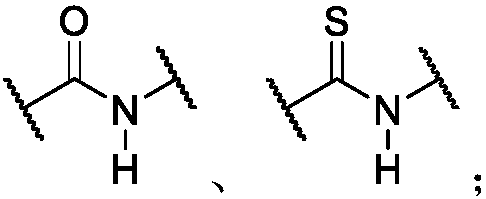Energy-absorbing method based on dynamic polymer
A polymer, dynamic technology, applied in the field of energy absorption, to achieve good controllability, outstanding energy absorption effect, and improve the effect of energy absorption
- Summary
- Abstract
- Description
- Claims
- Application Information
AI Technical Summary
Problems solved by technology
Method used
Image
Examples
preparation example Construction
[0260] In the preparation process of dynamic polymer, three methods of mechanical foaming method, physical foaming method and chemical foaming method are mainly used to foam dynamic polymer.
[0261] Among them, the mechanical foaming method is to introduce a large amount of air or other gases into the emulsion, suspension or solution of the polymer with the help of strong stirring during the preparation of the dynamic polymer to make it a uniform foam, and then through physical Or chemical changes make it gel and solidify to become a foam material. In order to shorten the molding cycle, air can be introduced and emulsifiers or surfactants can be added.
[0262] Wherein, the physical foaming method is to utilize physical principles to realize the foaming of the polymer in the preparation process of the dynamic polymer, which generally includes the following four methods: (1) inert gas foaming method, that is, after adding Press the inert gas into the molten polymer or pasty m...
Embodiment 1
[0316] Under anhydrous and oxygen-free conditions, using AIBN as an initiator, triethylamine as a catalyst, and chloroform as a solvent, react an equimolar amount of vinyl dichloroborane with 1,6-hexanedithiol at 80°C The dichloroborane double-capped compound was obtained, which was dissolved in tetrahydrofuran solvent to prepare a 0.2 mol / L solution.
[0317] Under anhydrous and oxygen-free conditions, using 4-dimethylaminopyridine and dicyclohexylcarbodiimide as a condensation agent, and chloroform as a solvent, polyethylene glycol 400 with a molar ratio of 1:2 and acrylic acid were refluxed. The double-bond-terminated polyethylene glycol is prepared by esterification, and then it is prepared by thiol-alkene click addition reaction with 3-mercapto-1,2-propanediol using AIBN as the initiator and triethylamine as the catalyst. To obtain a glycol-terminated polyethylene glycol compound, it was dissolved in a tetrahydrofuran solvent to prepare a 0.2 mol / L solution.
[0318] Mea...
Embodiment 2
[0320] Using diisopropyl (bromomethyl) borate, polyether amine with a molecular weight of about 5,000 as raw material, keeping the molar ratio at 2:1, potassium carbonate as a catalyst, and preparing boric acid through alkylation reaction at 90°C Ester-terminated polyetheramines.
[0321] Under anhydrous and oxygen-free conditions, using 4-dimethylaminopyridine and dicyclohexylcarbodiimide as condensing agent and chloroform as solvent, polypropylene glycol 1000 with a molar ratio of 1:2 and acrylic acid were passed through ester under reflux conditions. The double-bond-terminated polypropylene glycol was obtained by chemical reaction, and then AIBN was used as the initiator and triethylamine as the catalyst, and the diol-terminated polypropylene glycol was prepared by mercapto-1,2-propanediol through mercapto-alkene click addition reaction. terminal polypropylene glycol compound.
[0322] Take 12.5g of borate-capped polyetheramine and place it in a dry and clean beaker, add 8...
PUM
| Property | Measurement | Unit |
|---|---|---|
| elastic modulus | aaaaa | aaaaa |
| elastic modulus | aaaaa | aaaaa |
| elastic modulus | aaaaa | aaaaa |
Abstract
Description
Claims
Application Information
 Login to View More
Login to View More - R&D
- Intellectual Property
- Life Sciences
- Materials
- Tech Scout
- Unparalleled Data Quality
- Higher Quality Content
- 60% Fewer Hallucinations
Browse by: Latest US Patents, China's latest patents, Technical Efficacy Thesaurus, Application Domain, Technology Topic, Popular Technical Reports.
© 2025 PatSnap. All rights reserved.Legal|Privacy policy|Modern Slavery Act Transparency Statement|Sitemap|About US| Contact US: help@patsnap.com



